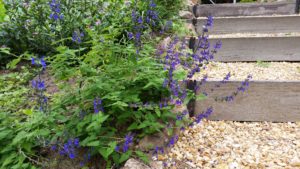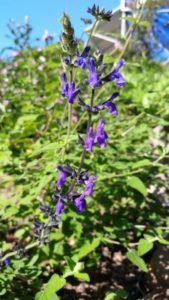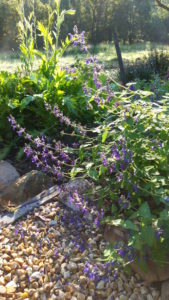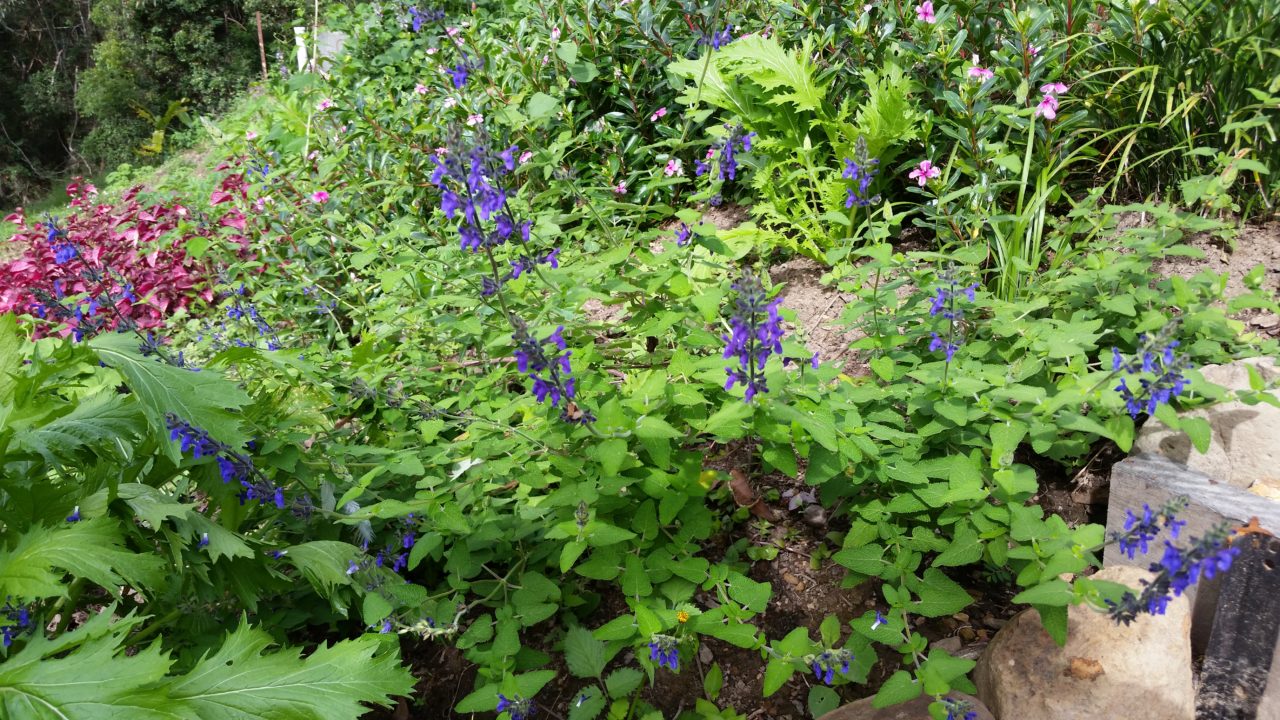This is a lovely low growing salvia with masses of deep blue flowers from late Summer, and attractive foliage the rest of the time. Salvia ‘Harmony’ is also called Salvia scordifolia by some, but as ‘scordifolia’ means ‘garlic leaf’, I am inclined to follow the opinion that it’s not a real name.

Robin Middleton writes that it is reported to have been found in Ecuador, then grown and sold for a while under the wrong name. He also writes that it is particularly difficult to grow in the UK due to the mild sun, which is a pity.

Salvia ‘Harmony’ has small (40 x 20 mm) elongated heart-shaped leaves, minty green with a pleasant fragrance along the lines of oregano. The leaves are attractively textured with little bumps, and the undersides are densely covered with fine white hairs. The dense cover of foliage on the plant makes it pretty when not in flower. Stems are fine and tend to grow vertically to flower, then fall and trail.
The flowers are small and borne in loose vertical spikes are the ends of the stems. The colour is an eye-catching deep blue.
Cultivation
Salvia ‘Harmony’ is suited to full sun. With its low sprawling habit it does well on edges where it can spread and trail. It grows well for me lining stairs on a steep slope, where the soil is deep and well drained. A rockery would also suit it well.
 This one had me stumped at first. I planted it in Spring in part shade and it just grew and spread beautifully without flowering. A few cuttings planted in full sun soon showed their potential, flowering right through the cooler months while the original plant eventually got overgrown by shade lovers.
This one had me stumped at first. I planted it in Spring in part shade and it just grew and spread beautifully without flowering. A few cuttings planted in full sun soon showed their potential, flowering right through the cooler months while the original plant eventually got overgrown by shade lovers.
The plants in full sun (and deep soil) mainly survived through extreme drought without watering, although with much reduced spread.
Salvia ‘Harmony’ grows easily from cuttings, but also sets plenty of seed. It does self sow locally, which I see as an advantage as it has colonised the steps. I can’t imagine it becoming a problem. The floppy stems also layer when they touch the ground, which can make for quick cuttings.

